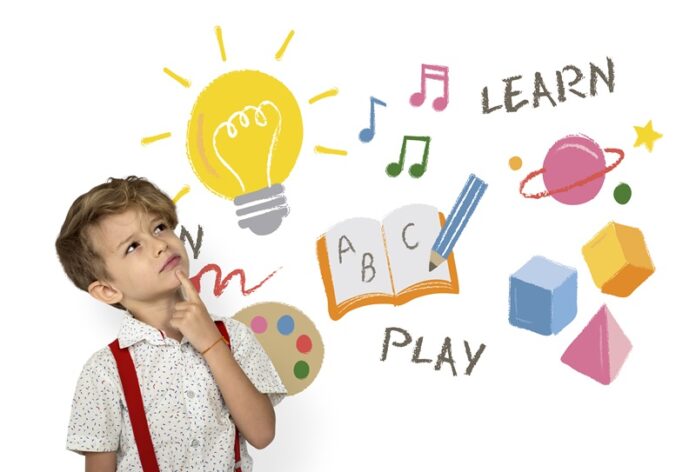
Early childhood education refers to the education and care of young children from birth to age 8. It encompasses activities and experiences that foster early learning, development, and care. Early childhood education lays the foundation for children’s future growth and development. The benefits of high-quality early childhood education are far-reaching and long-lasting. This article will examine the importance of early childhood education, its benefits, factors affecting it, types of early childhood programs, challenges, and strategies for improvement.
The early years of a child’s life are critical for building the foundation for lifelong learning and success. Early childhood education aims to support development across all domains – physical, cognitive, language, social and emotional. It promotes school readiness by equipping children with essential skills and knowledge. Early learning builds a strong base which enables children to thrive in school and beyond. The experiences and relationships in the early years shape the architecture of the developing brain. Early childhood education helps create positive learning environments during this crucial developmental window.
Research in neuroscience, psychology and education has demonstrated that high quality early childhood education can have significant short and long-term benefits. It positively impacts cognitive abilities, social skills, behavior, educational progression and even job prospects later in life. Nobel prize-winning economist James Heckman found that investment in early childhood education yields the greatest economic returns compared to later educational interventions. Early childhood education helps foster capable, responsible and contributing members of society. It is an essential component of economic and social development. Expanding access to high-quality early childhood education can create long-lasting social benefits for individuals and societies.
Benefits of Early Childhood Education
Early childhood education provides multidimensional benefits spanning across different developmental domains and extending over the life course.
Cognitive Development
Early childhood is characterized by rapid cognitive development. Quality early education and care from birth to 5 years helps build strong neural connections and provides enriching experiences during this period of exponential brain development. It fosters the cognitive abilities related to memory, reasoning, problem-solving and early math and literacy skills. Children participating in early education programs have shown better math and language abilities even before beginning formal schooling. Enrollment in high-quality preschool programs has been linked with better school readiness and higher literacy and numeracy skills during the early grades. The long-term effects include higher educational attainment, reduced need for grade repetition and special education, and higher earnings in adulthood.
Social and Emotional Development
Early childhood education helps promote children’s social and emotional maturity through activities that foster self-awareness, self-regulation, social awareness, relationship skills and responsible decision-making. High-quality programs facilitate positive teacher-child relationships. Interactions with teachers and peers in stimulating and nurturing environments support the development of social competence and emotional regulation. This serves as a foundation for relating well to others, cooperating effectively and displaying positive conduct. Preschool education has been linked to reduced behavioral problems and improved interpersonal skills during the school years and beyond.
Language Development
The preschool years are a pivotal period for language development marked by rapid vocabulary growth. Young children develop language abilities by engaging in conversations, listening to stories read aloud, participating in rhymes and finger plays. Early education programs expose children to rich language environments and interactions that foster communication skills. This helps strengthen their verbal fluency, expand their vocabulary and enhance their understanding of concepts about print that set the stage for learning to read and write. Studies confirm that children attending high-quality preschools gain an advantage in oral language abilities and literacy skills that persist through elementary school and high school.
Physical Development
Early childhood education promotes children’s physical growth, development of gross and fine motor skills, and acquisition of healthy behavior patterns. Preschools provide opportunities for multisensory exploration and safe physical play that develop coordination, balance and motor control. Physical activity, healthy eating habits and good hygiene practices established early aid growth and overall well-being. Early childhood programs may incorporate activities focused on developing motor skills along with fostering physical fitness and active lifestyles. Such experiences lay the groundwork for developing physically competent and confident children.
In summary, early childhood education plays a vital role in shaping learning and development trajectories across key domains of physical, cognitive, social, emotional and language development with both immediate and long-range impact. It provides nurturing, stimulating and secure environments that cultivate essential skills and capacities. High quality early education programs with developmentally appropriate curricula and skilled teachers can help children thrive.
Factors Affecting Early Childhood Education
Early childhood education does not take place in isolation. It is significantly shaped by various factors stemming from the settings of home, school, community and the broader society.
Family Background
A child’s first teachers are his or her family who provide the initial experiences and environments for learning and development. Factors like family structure, parenting styles, home language and belief systems influence the child’s early education. Parent-child interactions modeled on warmth, empathy and responsiveness support cognitive, language and social-emotional growth. Research shows children have optimal outcomes when families view them as capable, active learners and engage them in stimulating activities. Home learning environments rich in language, educational resources and learning opportunities bolster early skills. Conversational turn-taking, shared book reading and enriching experiences within families nurture emergent competencies.
Socioeconomic Status
Disparities in access to learning opportunities can arise from socioeconomic differences among families. Poverty, low parental education, unemployment and related adversities hinder conditions for early learning. Children experiencing socioeconomic disadvantage have higher risks of entering school with academic and social skill gaps. Lack of quality preschool experiences can compound these vulnerabilities. By contrast, families with higher income and education levels are better able to provide resources, experiences and learning environments that foster school readiness skills. High-quality early education programs may help buffer the effects of socioeconomic disadvantage on learning trajectories.
Parental Involvement
Parent engagement in early learning activities at home and in early childhood programs is consistently linked with better academic and behavioral outcomes. Warm, responsive parenting and rich home learning environments strengthen development across domains. Parent-teacher partnerships also enable coordination between home and school. Preschools can support families in enhancing home conditions for learning through parent counseling, home visits, family literacy programs and by encouraging educational interactions. Training parents to encourage children’s skills using affirmations and guided play can boost learning. Such family involvement allows reinforcing educational goals between home and school.
Quality of Early Childhood Programs
The quality of early childhood education programs significantly influences children’s learning and development. Structural quality aspects like teacher qualifications, class sizes, staff ratios, curriculum and physical infrastructure matter, as do process quality factors like engaging teacher-child interactions, responsive caregiving and richness of instructional content. Higher quality programs demonstrate better impacts on improving cognitive, language and social skills. Well-designed programs with adequate funding and trained teachers provide stimulating, structured and nurturing environments that optimize foundational learning and growth.
In summary, families, schools and communities shape children’s early education through socioeconomic conditions, parental practices, program quality and access to learning resources. Supporting families and improving program quality can positively influence learning. Systemic strategies to enhance early education require addressing barriers linked to socioeconomic disparities. Integrated approaches that connect families, schools and communities are needed for optimal early childhood education.
Types of Early Childhood Education Programs
Early childhood education is delivered through a diverse range of programs designed to foster development and learning in the critical early years from birth to kindergarten entry. These include center-based options like preschools, nursery schools and Head Start, as well as home-based alternatives.
Preschool and Nursery School Programs
Preschools provide early education and care services for children aged 3 to 5 years through part-day, full-day or extended-day programs. Nursery schools are similar but enroll children aged 2 to 5 years. These center-based programs are located in schools, child care centers, community centers, faith-based institutions or independent schools. They are overseen by directors and staffed by teachers and teacher assistants. Preschool curriculum focuses on building pre-academic skills in language, literacy, math and science while supporting social, emotional, physical and cognitive development through play, exploration and teacher-directed activities.
Head Start and Early Head Start
Head Start and Early Head Start are nationwide comprehensive early childhood programs for disadvantaged and low-income families. They promote school readiness through education, health, nutrition and family involvement services. Early Head Start serves pregnant women, infants and toddlers up to age 3 while Head Start is for 3- and 4-year-olds. Programs may be center-based, home-based with visits or a combination. The curriculum advances academic, social-emotional and physical development. Family involvement is also emphasized through education, home visits and addressing needs.
Child Care and Day Care
Child care centers and day care homes care for children while parents work or study. They provide basic supervision, nurturing and learning activities adapted to age levels from infancy through preschool. Some are licensed and offer planned programming while others mainly provide babysitting-type services. Education levels range widely based on center size, funding and state regulations. Larger centers tend to have better physical facilities, caregiver training and educational programming.
Home Visiting Programs
Home visiting programs support families with young children through regular visits by nurses, social workers or early childhood educators. Home visitors provide information and guidance on child health, development and care giving to first time mothers, parents with low education levels or families in need. They help parents engage children in beneficial activities, access services and strengthen home learning environments to foster school readiness.
Online Preschool
Online options for early education are emerging, though less prevalent. They provide digital preschool content using video lessons, games, songs and interactive resources. Children engage independently or with parents. Effectiveness depends on parental involvement and integration with offline activities. Critics argue that excessive screen time is counterproductive for young children.
In summary, early childhood education is delivered through diverse program options to support the multidimensional learning and developmental needs of young children. High quality center-based preschools staffed by well-trained teachers can provide enriched environments for nurturing growth. Home- and technology-mediated alternatives can potentially supplement center-based programs but require high levels of parental engagement to ensure student progress.
Importance of Play-Based Learning
Play is the fundamental learning medium in early childhood. Children construct knowledge and make sense of the world through playful exploration and interaction. Play-based learning harnesses this natural mode of inquiry to achieve developmental and educational goals.
Play cultivates cognitive, physical, social, emotional and creative learning in early childhood. Physical play like running, jumping, climbing helps build motor skills, coordination, balance and body awareness essential for growth. Pretend play encourages creativity, imagination and role-taking. Sociodramatic play promotes perspective-taking, conflict resolution and friendship skills. Early literacy and math skills are strengthened through games and activities incorporating shapes, colors, numbers, words and storytelling. Play builds foundational capabilities across domains through active, multisensory and meaningful experiences.
Play-based programs integrate child-directed free play and guided play facilitated by teachers. They employ playful activities to teach literacy, math, science, arts and social studies. Learning centers allow applying academic concepts through hands-on play. Interactive storytelling, dramatic enactments and games make learning engaging. Such playful learning fosters greater enjoyment, initiative and reinforcement compared to passive learning. Age-appropriate curricula ensure stimulating play activities aligned with developmental capacities and needs.
Effective play pedagogy requires well-designed play environments and thoughtful teacher involvement. Play spaces must provide diverse, open-ended materials to accommodate different learning styles and extend imagination. Teachers scaffold learning during play through questioning, modeling, prompting and feedback. They balance child-led play with teacher guidance tailored to learning goals. Ongoing assessment of learning progress through play aids designing responsive instruction.
Play equips children with flexible thinking, intrinsic motivation and adaptive skills needed for lifelong learning. Developmentally appropriate play-based early education promotes comprehensive learning while respecting the young child’s modes of discovery and expression. Play cultivates essential capabilities that prime children for more formal learning in elementary school and beyond.
Read Also: SMALL BUSINESS IDEAS FOR KIDS
Challenges in Early Childhood Education
While research substantiates the value of early childhood education, transforming this knowledge into high-quality universal programs faces several challenges that demand urgent solutions.
Lack of Funding
Inadequate funding is a key obstacle, especially in public pre-K programs. Low investment leads to poor infrastructure, large class sizes, low salaries and high turnover among teachers. Public programs serve around 30% of 4-year-olds and an even smaller percentage of 3-year-olds. High costs place quality preschools out of reach for many. Expanded public funding is essential to enable access, upgrade quality and optimize long-term economic returns from early education.
Teacher Training and Qualifications
The early childhood workforce lacks specialized preparation and professionalization. Preschool teacher qualifications vary widely from an associate degree to a bachelor’s or master’s. Specialized training in early childhood development principles, curriculum and pedagogy are rare. Poor compensation and high turnover impair quality as teachers lack mentoring and professional development. Requiring bachelor’s degrees, providing targeted training, and improving working conditions and wages are needed to attract and retain skilled teachers.
Access to Quality Programs
Access to affordable high-quality preschool remains limited for children from low-income and minority communities who stand to benefit the most. Many attend poor quality programs that fail to support optimal learning. Geographic location, concentrated poverty, lack of facilities, and program costs limit access and create disparities. Expanded funding, incentives and public-private partnerships can address inequities and barriers to high-quality early education.
Diverse Needs
Preschools face challenges in accommodating diverse needs. Dual language learners, children with developmental disabilities or learning difficulties require skilled instruction tailored to their needs. Teachers need knowledge of differentiated and culturally responsive instructional practices. Preschool facilities also need better physical accessibility. Training, flexible curricula and resources are essential for making early childhood education inclusive and effective for all learners.
These systemic issues make it difficult to deliver developmentally appropriate, universally accessible high-quality early education. Concerted efforts and reforms are imperative to realize the fundamental value of early learning for individuals and society.
Strategies for Improving Early Childhood Education
Significant advancements in early childhood education require cohesive and sustained efforts by multiple stakeholders across the policy, education and community sectors.
Government Policies and Initiatives
Federal and state governments shape early education policies and funding priorities. Policy reforms should make preschool education universally accessible for 3- and 4-year-olds with equitable funding for programs in disadvantaged areas. Governments can enact workforce development initiatives to strengthen teacher preparation and qualification requirements. Expanding home visiting programs and child care subsidies can further support early education access for at-risk children.
Community Involvement and Partnerships
Communities play a vital role in collaborative initiatives to expand early learning. Nonprofits can complement public preschools through innovative programs. Partnerships between school districts, universities, businesses, libraries and community organizations allow pooling expertise and resources. Preschool advisory councils enable coordinating programs, resources and professional development. Such collective efforts are instrumental in building local early childhood education ecosystems.
Professional Development for Teachers
Ongoing professional development should enhance preschool teachers’ skills in early childhood pedagogy, curriculum design, child development knowledge, observation and assessment. Training and mentoring programs need to be widely accessible through affordable university courses, onsite coaching, workshops, professional learning communities and conferences. These equip teachers to provide stimulating and developmentally appropriate education.
Parent Education and Involvement
Programs must inform parents about the research underscoring early education’s value and engage them as partners. Workshops, home learning kits and family events can empower parents to support learning through reading together, guided play and conversations. Home visits, parent-teacher meetings and progress reports strengthen connections between home and school. These initiatives promote the essential complementary roles of families and teachers.
Significant improvement of early childhood education requires systemic reforms in policy, teacher preparation, program quality, coordination and outreach. Focus must shift from isolated initiatives to building comprehensive systems spanning schools, government agencies, universities, communities, philanthropy and families. Sustained collaborative efforts can help actualize the tremendous potential of early childhood education.
Conclusion
Early childhood education has multifaceted short and long-term benefits critical for enabling children to flourish and live meaningful, productive lives. It is an unparalleled investment in human capital development and societal progress. Expanding access to high-quality early education can support academic success, economic prosperity, responsible citizenship, and stronger communities.
Despite this promise, too many children lack access to effective early learning environments and experiences that nurture their potential. Many challenges remain in enhancing system capacity, program quality, funding and workforce development. But these barriers are not insurmountable. With concerted efforts and reforms, high-quality early education can be made universally available to all children.
The time for action is now to prioritize early childhood in policy and public funding. We must view early education as a collective societal responsibility, not just a private family concern. Our children’s futures depend on laying robust foundations early instead of attempting to remedy deficits later at greater costs. By working collaboratively across sectors to expand access to evidence-based early childhood education, we can ensure optimal development and opportunity for every child. This is not only an urgent educational priority, but also a moral and economic imperative for our society. Let us come together and give all children the right beginning.











